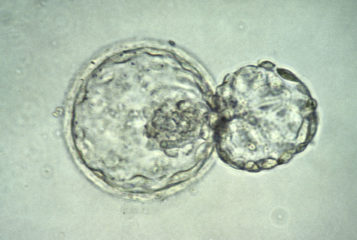Researchers have generated a specialised type of nerve cell - astrocytes - from embryonic stem cell (ES cells). The astrocytes were used to treat spinal injury in rats, with impressive results, restoring their ability to move freely. The team of scientists from the University of Rochester, New York, and the University of Colorado, Denver, US, published the work last week in the online Journal of Biology.
The researchers developed a system to generate astrocytes from ES cells and found that two different types could be grown, by using different conditions to nurture the stem cells. Astrocytes are nerve cells that have a star-like shape, and account for 70 per cent of all cells in the central nervous system. They play numerous roles in maintaining the structure, metabolism and function of the brain and spinal cord.
When transplanted into spinal injury sites in rats, the two types of astrocyte had completely different effects. One promoted the regeneration of nerve cells, and limb movement was recovered within four weeks. The other type failed to promote nerve fibre regeneration or recovery of movement and, in addition, caused severe pain.
Controlling the development of stem cells immediately before transplanting them into injured spinal cords is essential. This is because the injured tissues of the body cannot be relied on to create the right types of cells from stem cells. This is illustrated by the fact that when the researchers implanted the stem cells (before they were astrocytes), they failed to promote nerve regeneration and caused pain. The researchers say this is a breakthrough that will change the way spinal cord injuries are treated with stem cells.
'It has long been a concern that therapies that promote growth of nerve fibres in the injured spinal cord would also cause sprouting in pain circuits', said Dr Stephen Davies, from the University of Denver. He added: 'However by using the right astrocytes to repair spinal cord injuries we can have all the gains without the pain, while these other cell types appear to provide the opposite - pain but no gain'.
The team is working on extending its research to human cells. Dr Davies told the Telegraph newspaper: 'We hope to translate this promising new cell replacement therapy to clinical trials within the next two to three years if all goes well'.
Sources and References
-
Key Advance In Treating Spinal Cord Injuries Found In Manipulating Stem Cells
-
Special nerve cells could be key to treating spinal injuries





Leave a Reply
You must be logged in to post a comment.